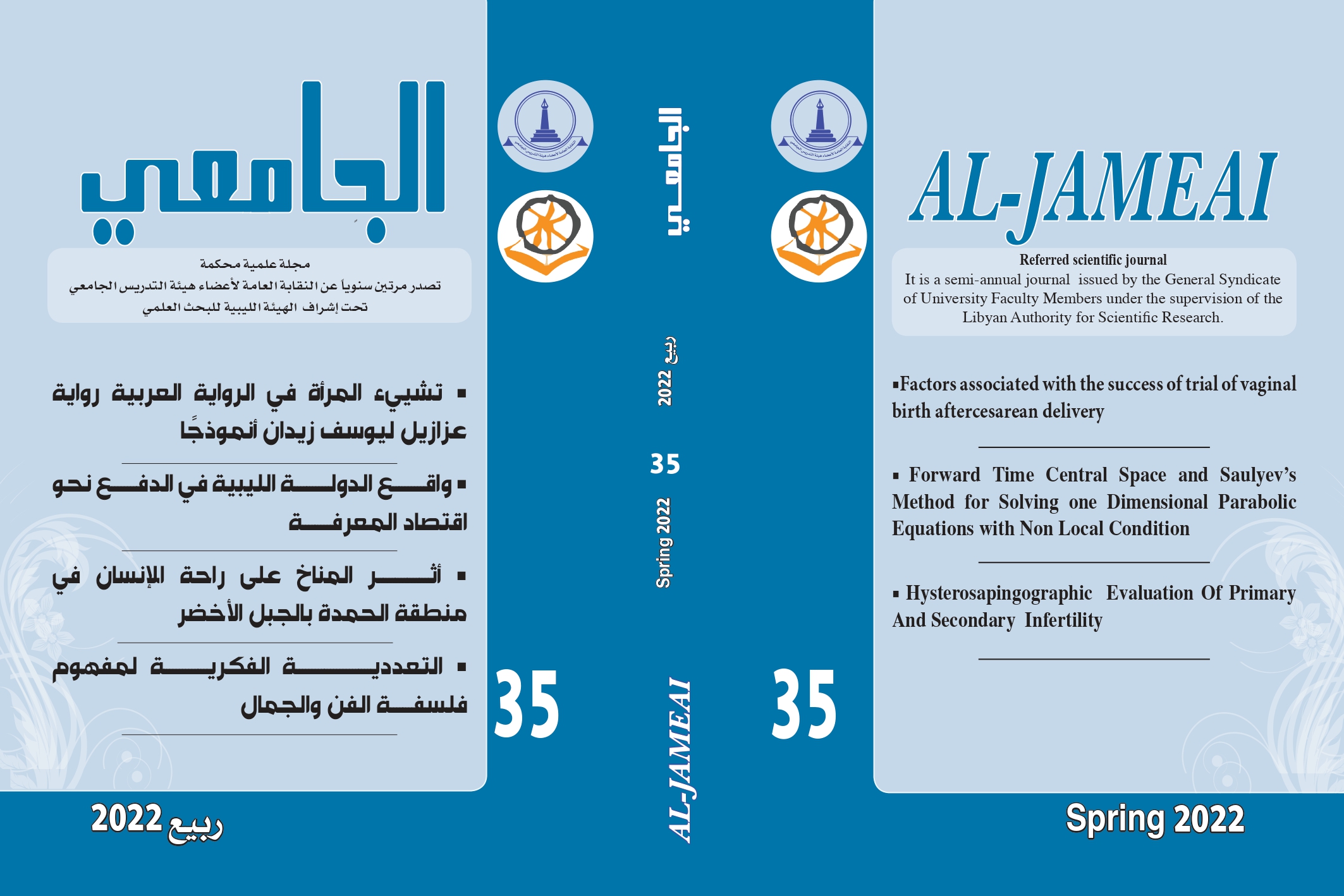Factors associated with the success of trial of vaginal birth after cesarean delivery
Abstract
Abstract:
Background: For many years, it was assumed that once a woman had a cesarean section, all future babies would be delivered this way. However, this is not always true women can choose to have a vaginal birth after cesarean section in a future pregnancy, but has different risks after benefits.
Objective of this paper: to study the factors associated with success of vaginal birth in women who had previous cesarean section at Al-khadra hospital
Methods and material: The study was retrospective, case series for three hundreds and seven patients with previous one cesarean section and went for trial of vaginal delivery
Statistical analysis was (SPSS version 22) that used for data entry and analysis.
Results: Among 307 women who had previous one cesarean section, all of the women had trial of vaginal delivery and the result will be presented as following:
1-Mode of delivery The success rate of vaginal delivery trial after one cesarean section was 38.1%. The rest of the women underwent cesarean section (61.9%).
2-Indication of current C/S The most common indication for current cesarean section was dystocia (38.3%) followed by fetal distress (24.7%), cephalopelvic disproportion CPD (16.4%) then postdate (8.2%)..
3-Age of the patients. The mean age of the participants who had successful vaginal delivery was (35±11.3years)
4-Obstetric history. B- Regarding the parity, 76.1% of the successful VBAC group and 90.2% of the failed VBAC group were between para 1 and para 3,
5-Gestational age. the current study showed that the mean gestational age for the patients who had successful vaginal delivery was 39.19 weeks and the mean gestational age of the patients who had failed vaginal delivery was 38.6 weeks.
6- Factors affecting the delivery. A-The majority of the patients in the both groups presented with cervical dilatation equal or less than 4cm (63.3% of the successful group and 88% of the failed group. B- The relation between previous vaginal delivery and the current mode of delivery was statistically significant (P value 0.0001) .C-The relation between the inter-delivery interval from the last cesarean section and the current delivery was statistically insignificant with p value 0.444.
Conclusion and recommendation: In patients without any contraindication to vaginal delivery, TOLAC is a safe option. In this study, successful VBAC was associated with the age of the patients, the past obstetric history, cervical dilatation, and history of previous vaginal delivery.
الملخص:
لسنوات عديدة كان من المفترض انه بمجرد ان تكون المرأة لديها عملية قيصرية سيتم تسليم جميع الاطفال في المستقبل بهده الطريقة مع دلك ادا اختارت النساء الولادة المهبلية بعد الولادة القيصرية في المستقبل عادة ما يكون الاختيار مناولكن له فوايد ومخاطرة عديدة وتهدف الدراسة لتعرف علي العوامل المرتبطة بنجاح الولادة المهبلية بعد الولادة القيصرية. حيت تم اجراء الدراسة في مستشفيي الخضراء يناير2018حيت تم اختيارتلاتماية وسبعة الدين تم اجراء الدراسة عليهم وكانت النتائج كالاتي: معدل نجاح الولادة المهبلية بعد الولادة القيصرية38.1%وكان المؤشر الأكثر شيوعا للولادة القيصرية عسر الولادة 38.3%%تليها الضيق الجنيني24.7%تم اتمام موعد الولادة8.2%بالاضافة ان متوسط العمر بالنسبة للمرضي الدين لديهم ولادات ناجحة 35 سنة ومتوسط العمر الجيني كان 39 اسبوع والعوامل التي تساعد في نجاح الولادة الطبيعية هي كالاتي اتساع عنق الرحم نسبته63.3% والمدة التي بعد القيصرية كانت علاقة موجبة .ومن هنا نستنتج ان الولادة الطبيعية يمكن ان تكون امنة بعد الولادة القيصرية شريطة ان تكون هناك عوامل اخري متحكمة فيها منها العمر والتاريخ المرضي واتساع عنق الرحم والمدة التي بعد الولادة الاولي.
Downloads









